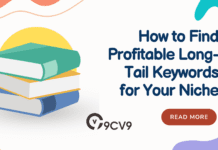Key Takeaways
- Buyer intent data in 2025 empowers businesses to personalize marketing strategies and target high-intent leads more effectively.
- AI and predictive analytics are reshaping how companies identify, track, and act on buyer intent signals across digital touchpoints.
- Integrating buyer intent insights into sales and marketing workflows drives higher conversion rates and improved customer engagement.
In today’s rapidly evolving digital marketplace, understanding buyer intent has become a cornerstone for successful marketing, sales, and customer engagement strategies.
As we move through 2025, businesses are increasingly relying on data-driven insights to decode consumer behavior, forecast purchasing patterns, and deliver personalized experiences at scale.
Buyer intent — the signals and indicators that reveal a prospect’s readiness to purchase — is no longer a vague concept limited to guesswork or intuition.
It has transformed into a measurable, strategic advantage powered by advanced analytics, artificial intelligence, and behavioral tracking technologies.

Buyer intent data provides companies with a competitive edge by revealing where customers are in their buying journey, what kind of content they are consuming, and what products or services they are most interested in.
With increasing access to real-time behavioral insights from search queries, website visits, content engagement, and third-party intent signals, organizations can now craft hyper-targeted campaigns and optimize sales funnels more efficiently than ever before.
This shift toward intent-based marketing is reshaping how businesses approach lead generation, account-based marketing (ABM), email marketing, and customer retention.
The importance of buyer intent is underscored by the growing complexity of the modern customer journey. With multiple touchpoints, channels, and devices influencing decision-making, simply knowing who your target audience is no longer suffices.
Today, it’s equally critical to understand what they are actively searching for, why they are interested, and when they are most likely to convert. This is where buyer intent data steps in — offering granular visibility into audience behavior and empowering brands to meet prospects with the right message at the right time.
In 2025, the landscape of buyer intent is being shaped by emerging trends such as predictive intent analytics, AI-driven personalization, B2B intent platforms, and real-time data aggregation.
These innovations are enabling marketers and sales teams to not only identify high-intent leads with greater accuracy but also to shorten sales cycles and boost return on investment (ROI).
Additionally, buyer intent strategies are becoming increasingly intertwined with other marketing technologies like customer data platforms (CDPs), customer relationship management (CRM) systems, and marketing automation tools, fostering a more integrated and data-centric ecosystem.
This comprehensive guide compiles the Top 100 Buyer Intent Statistics, Data & Trends in 2025 to provide readers with a well-rounded understanding of the current state and future direction of buyer intent.
Whether you are a B2B marketer looking to refine your lead scoring model, a sales professional aiming to close deals faster, or a business strategist seeking to align marketing and sales with actionable insights, these data points and trends will serve as a critical resource.
From industry-specific usage patterns to ROI benchmarks, consumer behavior trends, and technology adoption rates, this blog explores it all — offering valuable takeaways to help you thrive in an intent-driven world.
As intent data continues to revolutionize the way organizations attract, engage, and convert customers, staying updated with the latest statistics and insights is essential.
Dive into this detailed compilation and uncover how buyer intent is influencing strategic decisions across industries, transforming how brands connect with customers, and reshaping the future of digital marketing and sales in 2025.
Before we venture further into this article, we would like to share who we are and what we do.
About 9cv9
9cv9 is a business tech startup based in Singapore and Asia, with a strong presence all over the world.
With over nine years of startup and business experience, and being highly involved in connecting with thousands of companies and startups, the 9cv9 team has listed some important learning points in this overview of the Top 100 Buyer Intent Statistics, Data & Trends in 2025.
If your company needs recruitment and headhunting services to hire top-quality employees, you can use 9cv9 headhunting and recruitment services to hire top talents and candidates. Find out more here, or send over an email to [email protected].
Or just post 1 free job posting here at 9cv9 Hiring Portal in under 10 minutes.
Top 100 Buyer Intent Statistics, Data & Trends in 2025
Market Size and Growth
- The global market for B2B Buyer Intent Data Tools was valued at approximately $2.3 billion in the year 2023, and it is forecasted to expand significantly, reaching an estimated $6.5 billion by 2031, which corresponds to a compound annual growth rate (CAGR) of around 6.5% during the period from 2023 to 2031.
- Industry analysts project that the worldwide buyer intent tools market, which currently stands in the hundreds of millions of dollars range as of 2025, will experience robust growth over the next decade, potentially evolving into a multi-billion dollar industry by 2033 due to increasing demand for data-driven sales and marketing.
- According to recent surveys, over 70% of companies had plans to increase their investment and spending on buyer intent data in 2021, reflecting a growing recognition of the importance of intent signals in driving effective B2B marketing strategies.
- By the end of 2022, more than 70% of B2B marketers reported that they were actively using third-party intent data to better target prospective buyers or engage specific buyer groups, demonstrating widespread adoption of these tools in the industry.
Adoption and Usage Statistics
- Gartner’s research indicates that more than 70% of B2B buyers intended to increase their usage of third-party intent data to enhance their marketing and sales efforts by the end of 2022, underscoring the growing reliance on external intent signals.
- DemandGen’s 2022 report found that approximately 25% of B2B companies had already integrated intent data into their marketing processes, while an additional 35% planned to adopt such data within the following 12 months, indicating rapid market penetration.
- In the software industry specifically, about 40% of companies reported leveraging buyer intent data to support lead creation activities, highlighting the tool’s effectiveness in identifying potential customers in competitive markets.
- Currently, 46% of intent data and monitoring tools are being utilized within the B2B sector, which suggests that while adoption is significant, there remains considerable opportunity for further growth and integration.
- Nearly all major businesses—over 99%—are using some form of buyer intent data, whether for outreach, lead generation, or content marketing, reflecting the critical role of intent data in modern B2B sales cycles.
- A survey of B2B marketers revealed that 62% agreed that intent data significantly improves their ability to nurture leads and personalize marketing messages, which leads to better engagement and conversion rates.
- More than 73% of B2B marketers reported that they incorporated intent data into their email marketing campaigns, using it to tailor content and timing to the buyer’s stage in the purchasing journey.
- Despite the clear benefits, only 42% of marketers reported that they successfully link their own first-party intent data with third-party intent data, indicating a gap in data integration practices.
- Approximately 13% of respondents in a recent study indicated that they do not use buyer intent data for lead creation primarily because they lack access to senior-level buyers who are the typical targets of such data.
- Around 20% of marketers admitted that they have limited knowledge about buyer intent data and expressed a need to learn more about how to effectively utilize it in their sales and marketing strategies.
Impact on Sales and Marketing Performance
- Companies that actively use buyer intent signals have reported an average improvement in their return on investment (ROI) by as much as 232%, demonstrating the powerful impact of intent data on sales efficiency.
- Data shows that businesses leveraging buyer intent data tend to close deals that are 43% larger in transaction size compared to those that do not use such data, indicating higher-value sales opportunities.
- The use of buyer intent data has been linked to a 38% increase in the number of deals successfully closed, highlighting its effectiveness in accelerating the sales pipeline.
- Conversion rates improve by approximately 47% when companies incorporate buyer intent data into their marketing and sales processes, leading to more qualified leads and faster deal closures.
- Digital advertisements targeted using buyer intent signals show a 40% greater lift in purchase intent among viewers compared to ads targeted solely on demographic information.
- Similarly, ads that incorporate intent data demonstrate a 30% higher consideration lift, meaning that consumers are more likely to seriously evaluate the product or service being advertised.
- Overall, intent-based advertising campaigns have been found to be 2.5 times more efficient in terms of cost per acquisition and engagement metrics compared to traditional demographic-based campaigns.
- The clickthrough rates (CTR) of ads that utilize buyer intent data are on average 220% higher than those that do not, indicating significantly better engagement with target audiences.
- An overwhelming 93% of B2B marketers reported that using buyer intent data leads to increased conversion rates, confirming its value as a key component of effective marketing strategies.
- Sales teams convert leads generated from intent data 82% faster than leads generated through other traditional methods, according to industry research.
- About 92% of B2B organizations have successfully integrated buyer intent data into their existing marketing technology stacks, enabling more seamless and actionable insights.
- However, it typically takes around 61% of companies up to six months to fully realize a positive return on investment from their intent data initiatives, reflecting the need for sustained effort and optimization.
- When asked to rate the success of their intent data strategies, 33% of B2B companies described their efforts as “best-in-class,” while 63% considered their strategies “somewhat successful,” and only 4% admitted to being “unsuccessful.”
Buyer Behavior Insights
- According to a Google study from 2015, approximately 57% of the B2B purchasing process is completed by buyers before they ever contact suppliers directly, highlighting the importance of intent data in identifying buyers early in their journey.
- Despite the benefits, 25% of sales executives find it challenging to accurately track the return on investment (ROI) of intent data, which can hinder broader adoption and budget allocation.
- Among software companies, 40% acknowledge that buyer intent data provides tangible benefits in identifying and prioritizing leads, while 47% of medium-sized companies report similar positive impacts.
- More than 25% of businesses actively use purchase intent data to deliver targeted advertising campaigns aimed at companies that exhibit high engagement potential, thereby increasing the efficiency of their marketing spend.
Tool-Specific Data
- Bombora, one of the leading intent data providers, aggregates buyer intent signals from nearly 4 million unique domains and tracks approximately 16.3 billion interactions monthly across over 5,000 websites, providing broad coverage of buyer behavior.
- Bombora’s platform covers more than 13,000 B2B topics, including detailed categories such as competitive product buyer intent, enabling highly granular targeting.
- The intent data platform 6sense combines multiple data sources, including first-party, second-party, and third-party intent data, to provide a comprehensive view of buyer behavior for account-based marketing initiatives.
- 6sense leverages artificial intelligence and machine learning algorithms to analyze buyer behavior signals and predict purchase intent, allowing sales and marketing teams to focus on the most promising opportunities.
- HubSpot’s CRM and marketing automation tools include features that automatically score leads based on their buyer intent activities, helping sales teams prioritize follow-ups effectively.
- ZoomInfo integrates buyer intent data with popular CRM platforms to deliver real-time, actionable insights that help sales teams engage prospects at the right time with the right message.
Challenges and Limitations
- Data quality is cited as a top challenge by 56% of B2B companies when utilizing buyer intent signals, with issues such as incomplete or inaccurate data impacting effectiveness.
- The complexity involved in integrating multiple data sources and the requirement for specialized skills to interpret intent data are significant hurdles that many companies face.
- The high costs associated with implementing and maintaining buyer intent data tools act as a barrier to adoption for some businesses, especially smaller enterprises with limited budgets.
- Third-party intent data often has lower fidelity signals compared to first-party data, which can lead to skepticism and reduced buy-in from sales teams who rely on accurate lead information.
Additional Quantitative Insights
- Nearly 98% of businesses report that using buyer intent data has increased the overall success of their marketing and sales efforts, demonstrating widespread recognition of its value.
- 62% of B2B marketers agree that intent data improves their ability to personalize communications and nurture leads effectively throughout the buyer journey.
- Over 70% of B2B marketers use third-party intent data to better target prospects and increase engagement rates.
- In the software industry, 40% of companies use buyer intent data specifically for lead creation purposes.
- 25% of sales executives find it difficult to track the ROI of intent data, which can limit further investment.
- 33% of B2B companies rate their intent data strategy as best-in-class, reflecting strong confidence in their approach.
- 63% of companies consider their intent data strategy somewhat successful, indicating room for improvement.
- Only 4% of companies report their intent data strategy as unsuccessful.
- 20% of marketers acknowledge that they have limited knowledge about buyer intent data and its applications.
Summary of Top Buyer Intent Tools Usage
- Leadfeeder is widely recognized as the best tool for capturing and analyzing first-party intent data, enabling companies to identify website visitors and their interests.
- ZoomInfo is considered the leading platform for integrating buyer intent data directly into sales workflows, improving lead prioritization and outreach.
- Cognism excels in targeted prospecting by combining buyer intent data with firmographic and contact information.
- G2 provides full-funnel second-party intent data derived from millions of user reviews, helping marketers understand buyer sentiment and intent.
- TrustRadius is particularly effective for downstream purchase decisions in mid-market and enterprise segments, offering detailed intent data from verified users.
- PeerSpot specializes in second-party intent data in sectors such as IT, DevOps, and cybersecurity, providing niche insights for targeted marketing.
- Gartner Digital Markets captures in-market small and medium business (SMB) demand using intent data derived from its extensive network of technology buyers.
- Bombora is ideal for capturing a large pool of third-party intent data across thousands of B2B topics, offering broad market coverage.
- 6sense combines multiple buyer intent data sources and applies AI-driven predictive analytics for account-based marketing strategies.
- TechTarget serves larger IT sales and marketing teams by providing targeted third-party intent data focused on technology buyers and decision-makers.
More Quantitative Data Points (Selected)
- Over 70% of companies expressed intentions to increase their spending on buyer intent data in 2021, signaling growing confidence in the technology.
- 97% of businesses that use buyer intent data report achieving a positive return on investment, underscoring the financial benefits.
- 40% of software businesses actively use buyer intent data to generate and qualify leads.
- A quarter of sales executives find it difficult to track the ROI of intent data, which remains a challenge for wider adoption.
- 62% of B2B marketers agree that intent data enhances their ability to nurture leads and personalize marketing campaigns.
- 73% of B2B marketers incorporate intent data into their email marketing strategies.
- Only 42% of marketers successfully link first-party and third-party intent data to maximize insights.
- 46% of B2B companies currently use intent data tools in their marketing and sales processes.
- One-third of B2B companies rate their intent data strategy as best-in-class.
- Nearly two-thirds (63%) rate their strategy as somewhat successful.
- A small minority (4%) rate their intent data strategy as unsuccessful.
- Data quality is a top challenge for 56% of companies using buyer intent data.
- Intent-based advertising campaigns are 2.5 times more efficient than traditional demographic-based campaigns.
- Ads targeted with intent data have a 220% higher clickthrough rate.
- 93% of B2B marketers report increased conversion rates when using intent data.
- 82% report that sales teams convert intent data leads faster than other leads.
- 92% of B2B organizations successfully integrate intent data into their marketing technology stacks.
- Over 60% of companies take up to six months to see ROI from intent data investments.
- More than 25% of businesses use purchase intent data to deliver targeted ads to high-potential companies.
- 40% of software firms use buyer intent data for lead creation.
- 47% of medium-sized companies report benefits from buyer intent data.
- Over 70% of B2B marketers use third-party intent data to target prospects.
- 13% of companies do not use buyer intent data due to lack of access to senior buyers.
- 20% of marketers admit they have limited knowledge about buyer intent data.
- 98% of businesses find that intent data increases marketing and sales success.
- Nearly all major businesses (99%) use intent data in some form.
- 46% of B2B companies currently use intent data tools.
- Bombora tracks 16.3 billion buyer interactions monthly.
- Bombora covers over 13,000 B2B topics for intent data.
- 6sense combines multiple intent data sources for predictive analytics.
- 6sense uses AI to model buyer intent and prioritize accounts.
- HubSpot automatically scores leads based on intent data signals.
- ZoomInfo provides real-time buyer intent insights integrated with CRM systems.
- 56% of companies cite data quality as a challenge with buyer intent data.
- 25% of sales executives find ROI tracking of intent data difficult.
- 33% of companies rate their intent data strategy as best-in-class.
- 63% rate it as somewhat successful.
- 4% rate their intent data strategy as unsuccessful.
- Over 70% of B2B buyers use third-party intent data.
- Companies using buyer intent data report an average ROI improvement of 232%.
Conclusion
As the digital economy grows more competitive and consumer behaviors continue to evolve, the importance of understanding buyer intent cannot be overstated. The comprehensive overview of the Top 100 Buyer Intent Statistics, Data & Trends in 2025 has illuminated the strategic significance of intent data in shaping high-performance marketing and sales initiatives. From leveraging behavioral insights to implementing predictive analytics and AI-powered segmentation, buyer intent is redefining how organizations attract, nurture, and convert leads in today’s hyper-personalized, customer-centric business environment.
The data presented throughout this blog underscores a clear trend — businesses that invest in identifying and acting on buyer intent signals are more likely to generate qualified leads, accelerate sales cycles, enhance customer experiences, and drive measurable ROI. In 2025, buyer intent is not just a tactical tool; it is a core strategic asset that enables companies to stay ahead of shifting market dynamics and increasing customer expectations. Whether it’s through real-time behavioral tracking, third-party data integrations, or advanced predictive modeling, businesses that prioritize intent intelligence are more adept at making informed, timely, and impactful decisions.
Moreover, the proliferation of tools and platforms designed to capture and interpret buyer intent data — such as intent-based marketing platforms, customer data platforms (CDPs), and marketing automation software — is enabling organizations to scale their efforts with greater precision and agility. These technologies are making it possible to seamlessly integrate intent signals into cross-functional workflows, ensuring that marketing, sales, and customer success teams are aligned in their approach to engaging high-intent prospects and delivering value at every stage of the customer journey.
The trends highlighted in 2025 also point to a broader evolution in customer engagement. Personalization has moved beyond surface-level content targeting to deep, intent-driven experiences powered by machine learning, AI, and enriched data streams. B2B companies, in particular, are seeing remarkable benefits by aligning account-based marketing (ABM) strategies with buyer intent signals, enabling them to target decision-makers with tailored content and solutions that match their specific pain points and priorities.
Additionally, the insights gathered from buyer intent data are increasingly influencing long-term business strategies — from product development and content planning to market segmentation and customer retention. Organizations that leverage this intelligence holistically are better positioned to identify emerging demand, anticipate shifts in customer needs, and innovate faster than their competitors.
In conclusion, the vast array of statistics, data points, and emerging trends showcased in this guide makes one thing abundantly clear: buyer intent is the key to unlocking sustainable business growth in 2025 and beyond. Companies that adopt a data-first mindset, invest in the right technologies, and build a culture around insight-driven decision-making will not only improve their conversion metrics but also forge deeper, more meaningful relationships with their customers.
As you consider how to apply these insights to your own business strategies, remember that success in the modern digital landscape lies in your ability to understand and anticipate your audience’s needs before your competitors do. Buyer intent is the roadmap — and those who follow it will lead the way in creating responsive, revenue-generating, and customer-aligned business models. Stay ahead of the curve, embrace the power of buyer intent, and prepare to transform your go-to-market strategy with greater precision and performance in 2025.
If you find this article useful, why not share it with your hiring manager and C-level suite friends and also leave a nice comment below?
We, at the 9cv9 Research Team, strive to bring the latest and most meaningful data, guides, and statistics to your doorstep.
To get access to top-quality guides, click over to 9cv9 Blog.
People Also Ask
What is buyer intent in 2025?
Buyer intent in 2025 refers to the behavioral signals and data insights that indicate a prospect’s likelihood to make a purchase.
Why is buyer intent data important for marketers?
It helps marketers identify ready-to-buy leads, personalize content, and improve conversion rates through data-driven targeting.
How is buyer intent data collected?
Buyer intent data is gathered through online behavior such as content consumption, search queries, website visits, and third-party platforms.
What are some top sources of buyer intent data in 2025?
Top sources include website analytics, social media interactions, B2B intent platforms, CRM systems, and third-party data providers.
How does AI influence buyer intent tracking in 2025?
AI improves buyer intent tracking by analyzing patterns in real-time and predicting purchase behavior with greater accuracy.
What industries benefit the most from buyer intent data?
B2B tech, SaaS, eCommerce, healthcare, and finance industries benefit greatly due to high-value, data-driven decision-making.
How is buyer intent data used in account-based marketing (ABM)?
It allows ABM teams to target decision-makers with relevant content based on real-time engagement and interest signals.
What is third-party buyer intent data?
It refers to behavioral data collected from external sources like industry websites and content networks outside your owned channels.
How does buyer intent shorten the sales cycle?
It helps sales teams focus on leads that are actively researching solutions, reducing time spent on unqualified prospects.
What are the top buyer intent trends in 2025?
Trends include AI-driven analytics, real-time personalization, cross-channel tracking, and integration with CDPs and CRMs.
Can buyer intent data improve lead scoring?
Yes, it enhances lead scoring by adding behavioral layers that indicate how close a prospect is to making a purchase.
How do companies analyze buyer intent signals?
They use tools like predictive analytics, machine learning models, and integrated dashboards for behavior-based insights.
What role does buyer intent play in personalization?
It allows businesses to tailor content, messaging, and offers to match the user’s specific interests and stage in the buyer journey.
Is buyer intent data GDPR compliant?
Yes, if collected ethically and transparently with user consent, it can be fully compliant with GDPR and other data regulations.
What is the ROI of using buyer intent data?
Companies using intent data typically see higher engagement, lower acquisition costs, and increased revenue through better targeting.
What are the challenges of using buyer intent data?
Challenges include data accuracy, integration across platforms, and the complexity of interpreting multi-source intent signals.
How often should buyer intent data be updated?
To remain effective, buyer intent data should be updated in real-time or at least weekly to reflect the latest behavioral trends.
What are predictive intent signals?
These are data indicators analyzed by AI to forecast future buyer behavior and likelihood of conversion.
How does buyer intent differ from demographic targeting?
Buyer intent focuses on behavior and readiness to buy, while demographics provide general information like age or job title.
Can buyer intent data be used in B2C marketing?
Yes, although more commonly used in B2B, B2C marketers are leveraging it for personalized product recommendations and timing.
How does buyer intent affect SEO strategies?
SEO strategies are influenced by aligning content with search intent, allowing brands to rank higher and attract more relevant traffic.
Which tools are best for tracking buyer intent in 2025?
Top tools include Bombora, Demandbase, ZoomInfo, 6sense, and custom AI-driven analytics platforms.
What KPIs are used to measure buyer intent effectiveness?
Common KPIs include lead conversion rate, engagement score, sales velocity, and influenced revenue.
How do buyer personas relate to intent data?
Intent data enriches buyer personas by adding dynamic behavioral insights beyond static profile characteristics.
Is buyer intent relevant for small businesses?
Absolutely, even small businesses can leverage affordable intent tools to target the right audience more efficiently.
Can buyer intent help with content strategy?
Yes, it informs what topics and formats resonate with high-intent users, guiding content creation priorities.
What platforms offer real-time buyer intent data?
Platforms like Leadfeeder, G2, and Slintel provide near real-time buyer intent insights for lead engagement.
How does buyer intent help sales reps prioritize leads?
It shows which leads are actively researching solutions, enabling reps to focus efforts on the most promising opportunities.
What future trends will shape buyer intent in the next few years?
Expect deeper AI integration, real-time automation, broader data ecosystems, and stronger privacy compliance measures.
How can companies start using buyer intent data?
Start by identifying goals, choosing the right intent platform, integrating it with existing tech stacks, and training teams accordingly.
Sources
- Gartner Research
- DemandGen Report
- Bombora Intent Data Overview
- 6sense AI-Driven Intent Data
- HubSpot Buyer Intent Features
- ZoomInfo Buyer Intent Integration
- Google B2B Buyer Behavior Study
- TrustRadius Intent Data Insights
- PeerSpot Intent Data Use Cases
- TechTarget Intent Data Solutions































![Writing A Good CV [6 Tips To Improve Your CV] 6 Tips To Improve Your CV](https://blog.9cv9.com/wp-content/uploads/2020/06/2020-06-02-2-100x70.png)


